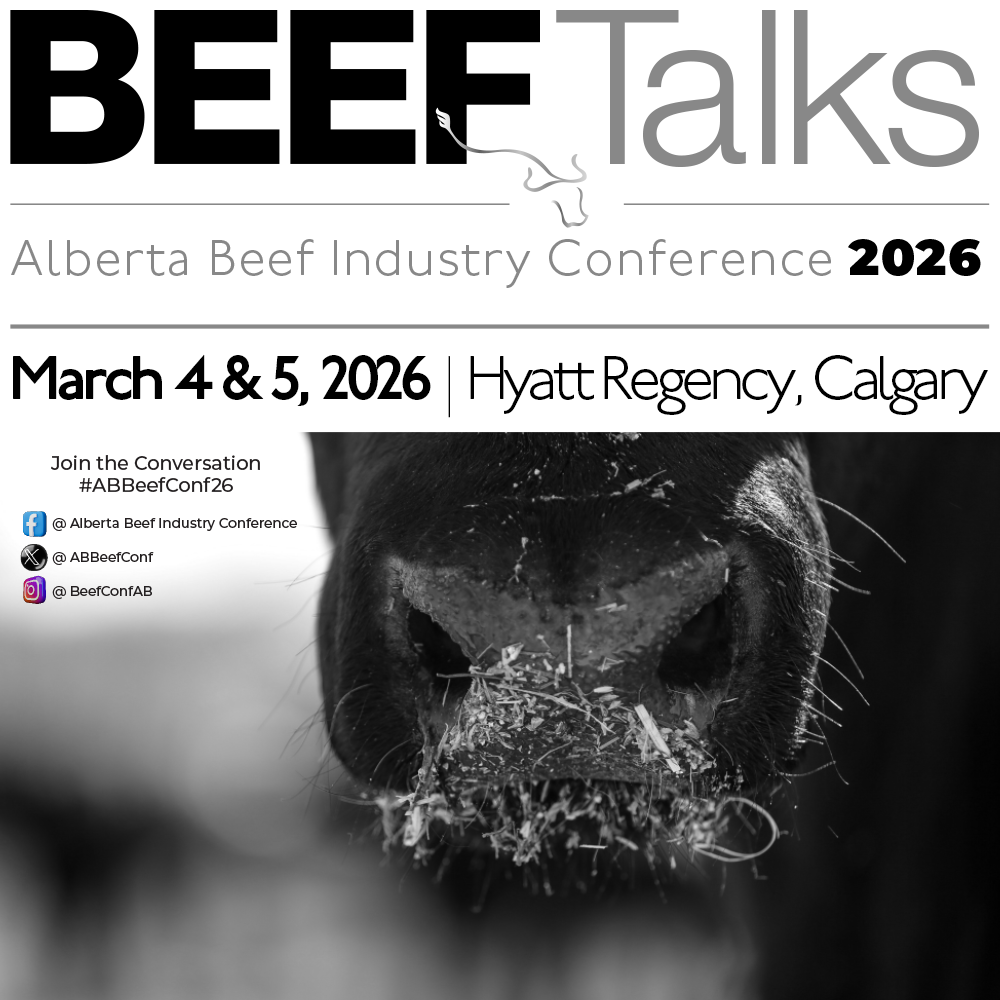AB Direct - Steers
Rail: 495.00 del
AB Direct - Heifers
Rail: 495.00 del
US Trade- Steers
Rail: 355.00-363.00 (IA, NE)
US Trade - Heifers
Rail: 355.00-363.00 (IA, NE)
Canadian Dollar
0.05
An update on beef transport research findings
Ensuring cattle health and safety during transport is important. As the two-year phase-in period for Canada’s new cattle transport regulations comes to an end this February, new research findings are being released that offer helpful direction for industry and producers.
“As an industry, we expect that our policies, regulations and management practices are informed by scientific research. Projects like this transport project, performed under Canadian conditions, not only give producers more information on how to improve the health and welfare of their cattle, but also provide key data to regulators to ensure that legislation and policies are reflective of the best available scientific knowledge.”
Karin Schmid, Beef Production and Extension Lead, ABP
In February 2020 the Canadian Food Inspection Agency (CFIA) began phasing in stricter regulations reducing the length of time livestock can be in transport without feed, water, and rest from 48 to 36 hours, and increasing the required length of the feed, water and rest interval from 5 to 8 hours
The new regulations have been phased in over the past two years to allow industry time to adjust and is scheduled to be fully enforced beginning in February 2022.
Graduated enforcement for transport regulations ends
Dr. Karen Schwartzkopf-Genswein, Principle Research Scientist, Beef Cattle Physiology and Welfare with Agriculture and Agri-Food Canada in Lethbridge, along with her research associate Dr. Daniela Melendez are currently leading research designed to improve animal welfare outcomes by determining the effects of transport and rest stops on cattle. “Our goal is to provide research data to validate the recommendations so they would be science-informed,” she says.
In collaboration with Dr. Derek Haley at the University of Guelph, with primary funding provided by Beef Cattle Research Council (BCRC), three research trials have now been conducted. Here is a review of those findings.
Trip Length Matters More
The first year of the study trialed various lengths of rest stops after either 12 or 36 hours of transport followed by an additional four hours of transport. Behavioural and physiological indicators were measured during all tests, and health and growth performance was monitored for 28 days after.
“We were completely surprised. We saw no differences in any of the stress or behavioural measurements between those given rest versus no rest, with the exception of the feed deprivation measurement,” says Schwartzkopf-Genswein.
She continues: “It wasn’t in the rest stop that we saw the difference; it was between the times of transport. A longer transport time produced a greater impact on the animals.”
Calves transported for 12 hours generally shrank less, weighed more and grew faster than calves transported for 36 hours, the research found.
Preconditioning Has Benefits
At the end of year one, researchers realized preconditioning might have an impact. The calves were preconditioned prior to transport—vaccinated, given antibiotics, dewormed, and adapted to pens. In the second trial, they included preconditioning as part of the experiment.
The study was done one year later with a different group of calves, and compared rest periods of zero and eight hours after 36 hours of transport followed by another four hours of transport.
Results again showed no significant impact as a result of the rest stop, except greater food deprivation in unrested calves. The more significant difference was found in preconditioning. Non-preconditioned calves had greater stress indicators, including inflammation, feed deprivation and muscle fatigue.
“There were many differences indicating that non-preconditioned calves had more stress than preconditioned calves,” says Schwartzkopf-Genswein. “The provision of rest seems to be less important than preconditioning, which is much more impactful than rest in terms of what we see in their stress and welfare responses.”
Transport Tips
1. One size does not fit all
Transport regulations that currently treat all livestock the same should not be one size fits all. “Our findings with young healthy calves show one thing, but if you did the same study with cull cows you’d likely find something quite different,” notes Schwartzkopf-Genswein. “We suggest that the regulations should be targeted to the type of animal, and not applied to all animals in the same way.”
2. Preconditioned animals fare better
Research found preconditioning is beneficial for feed calves, and improves their ability to handle transport stress more than providing feed, water and rest during the trip. “The condition of the animal going onto the truck really dictates how well they manages the transport. The first two studies show how important preconditioning is—it really makes a difference,” she says.
3. Reduce animal stressors
To improve an animal’s transport experience, reduce stressors and consider their conditions prior to being loaded. “This research provides good support for ensuring that animals are in best condition before being transported. Don’t create stressors for them right before they travel,” says Schwartzkopf-Genswein.
Year Three Results Coming Soon
In the third trial, a longer period of transport after the rest stop was included. This required more funds for the additional transport, which was provided by ABP and Ontario Beef Farmers.
“Cattle travel on average 15 hours to their final destination after they are rested at Thunder Bay,” says Schwartzkopf-Genswein. “The extra funding helped us provide this longer transport time after the rest stop, which was a unique aspect of the third trial.”
Both conditioned and non-conditioned calves were included in the third trial. They were transported 20 hours, then rested for either zero or eight hours, then transported an additional four or 15 hours.
Schwartzkopf-Genswein and her team are interested in learning whether the longer transport after the rest makes a significant difference. “The longer journey after the rest may affect the results, since in the first two trials the calves were only transported an additional four hours after their rest,” she says.
Year three results were being analyzed when this article went to print. They will be released in February 2022, and shared with the CFIA, supporting a scientific basis for future changes in livestock transport regulations.
This article was first published in Volume 2 Issue 1 of ABP Magazine (January 2022). Watch for more digital content from the magazine on ABP Daily.


